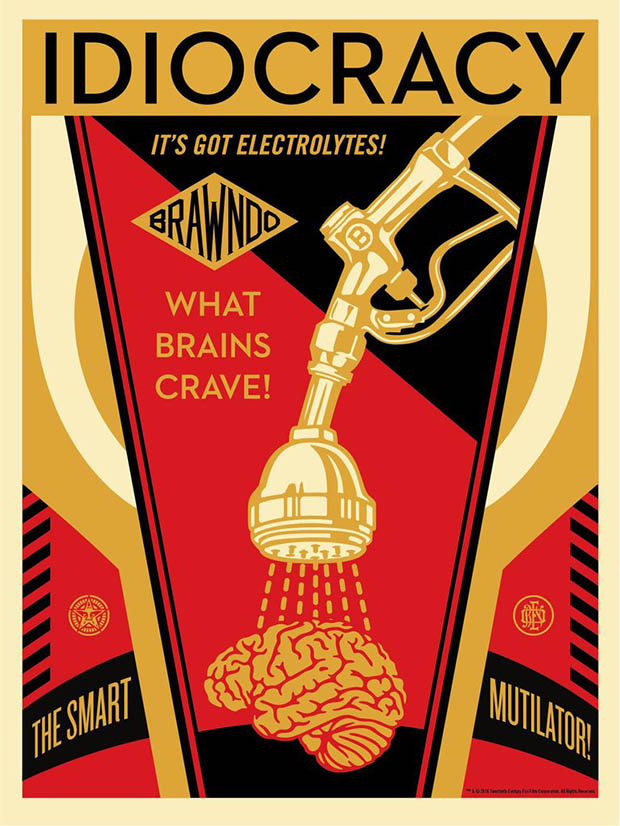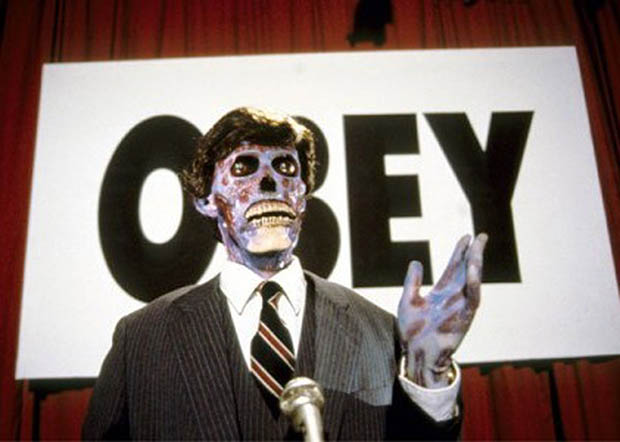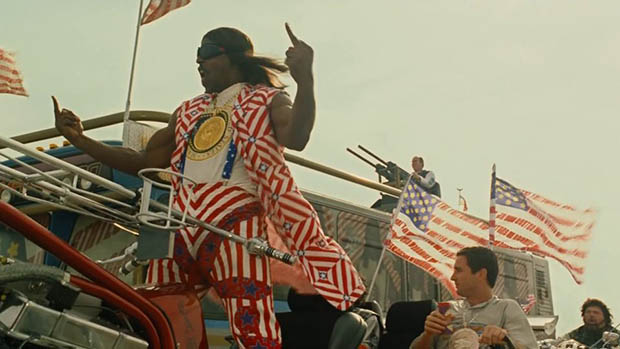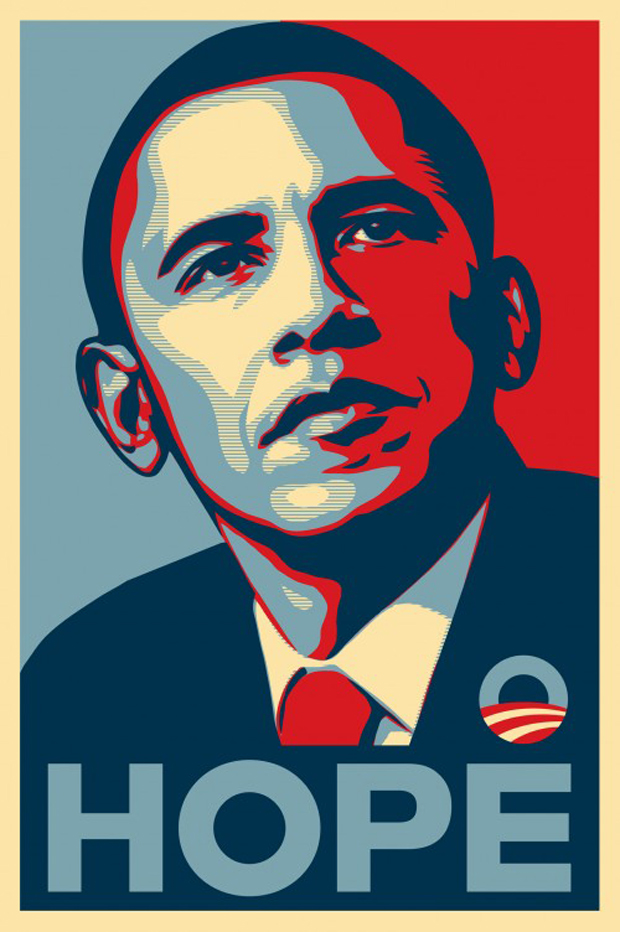
The dumb film behind Shepard Fairey's new print
The OBEY and HOPE artist draws from Mike Judge’s lost classic, Idiocracy, when drawing up this political work
Before his 2008 Hope poster for Barack Obama campaign went global, the US street artist Shepard Fairey was better known for his OBEY pieces.
These public artworks and a subsequent clothing line was inspired by the 1988 John Carpenter film They Live. Set in LA, the film’s plot hinges on a pair of sunglasses which allow the wearer to see the underlying messages behind billboard adverts (Obey, Consume, Submit., etc.).

Now, as Obama’s second term draws to a close, Fairey has produced his 2016 election offering, drawning from another lost movie classic: Idiocracy, a 2006 satire by Mike Judge (Beavis and Butt-Head; Office Space).
Set in a futuristic, profoundly dumb America, ruled by an ex-wrestler and wracked with food shortages – thanks to the substitution of water for a sports drink ‘Brawndo’ in the country’s irrigation system – Judge’s film might not have been a hit at the box office, yet it has since found a loyal audience, who feel the movie is less a sci-fi comedy, and more a sharp critique of our times.

Fairey’s 2016 poster draws on the film’s central themes without overly endorsing any candidate. However, 100% of proceeds from sales of his limited-edition signed print, available today, 10 October, until 7pm Central Standard Time, will help fund the League of Women Voters, and Young Literati, which supports Los Angeles Public Library.
“I’ve always felt that art, entertainment, and humour can be the best delivery vehicles for social commentary, so I love the way humour is used in “Idiocracy” to make the social critique more digestible,” Fairey explains. “The movie is a harsh but necessary indictment of the anti-intellectual culture and politics that seem to become the norm more and more everyday.”

Let’s hope Fairey’s poster counters that cultural trend. For greater insight into his 2008 Hope work and plenty more besides order a copy of our book dedicated to Creative Dissent in the 21st Century, Visual Impact.